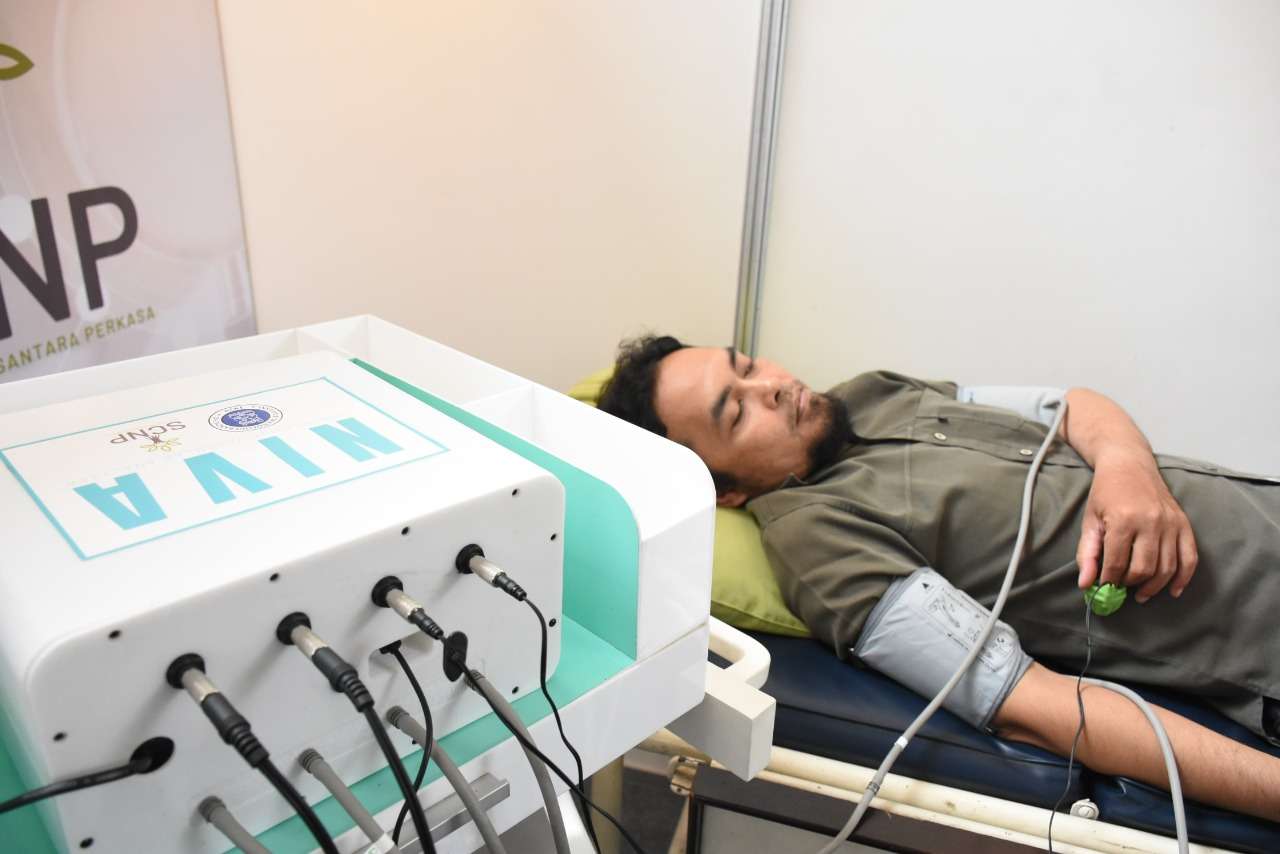STEI ITB Biomedical Engineering Research Group Together with Private Parties Develop Early Detection of Cardiovascular Diseases
The Biomedical Engineering Expertise Group, School of Electrical and Informatics Engineering (STEI), Bandung Institute of Technology (ITB) developed a device to detect cardiovascular disease.
The device, named NIVA or Non-Invasive Vascular Analyzer, was launched by ITB Chancellor Prof. Dr. Kadarsah Suryadi on Thursday, 12 Dec, at CRCS ITB, attended by the Minister of Research and Technology / National Agency for Research and Technology Prof. Bambang P. Brodjonegoro.
Prof. Dr. Ir. Tati Latifah Erawati Rajab Mengko, as the head of the NIVA team, explained that research on this tool has been started since 2013 and then uses National Strategic Leading Research funds from DIKTI, Ministry of Education and Culture for three years.
“At that time an idea emerged which was prompted by a request from the doctor that whether we could make a device that could detect early signs of blockage in blood vessels,” said Prof. Tati at the Ahmad Bakrie Building, ITB. Dr. Hasballah Zakaria , Dr. Richard Mengko, and the ITB Biomedical Engineering team also participated in the research.

NIVA which is a non-invasive device using a PPG sensor (photoplethysmograph) and this blood pressure sensor will analyze the blood vessels in the human body. “This tool is designed to measure Vascular function with 6 parameters, and Vascular risk level for 5 parameters simultaneously,” he said.
Blockage of Blood Vessels.
Prof. Tati, blockage of blood vessels usually occurs because there are plaques in the blood vessels. The plaque appears because the blood vessels are not slippery because Nitric Oxide (NO) is reduced. NO is very important in maintaining the flexibility of blood vessels.
He further said that increasing human age also affects the production of NO in the endothelial layer, which is the innermost layer of human blood vessels, so that the flexibility of blood vessels also decreases. This results in increased blood pressure or hypertension.
Regarding blood vessel health, which is very expensive to treat, Prof. Tati said this equipment can help BPJS detect the risk of stroke and heart disease. “Therefore, this equipment is expected to be able to detect the disease from the start. With this tool, if the results of the parameters are not good, we can immediately seek treatment to a doctor before anything worse happens, ”he said.
In cooperation with PT. In harmony, this tool is ready for mass production so that it can be of use to the public at large. Currently, NIVA has been tested and used in two hospitals, namely the Harapan Kita Heart Hospital in Jakarta and Hasan Sadikin Hospital in Bandung. In the future, this tool will also be tested at the Surabaya Unair Hospital, Sardjito Hospital, and at the Gatot Subroto Hospital.
The existence of NIVA is an integrated solution for measuring blood vessel health. Through a cooperative approach with this industry, production prices can be reduced. In addition, this equipment will be an effective screening tool to reduce the number of patients requiring medical attention. This device is also expected to reduce imports and boost the domestic industry’s ability to produce various other medical devices.

